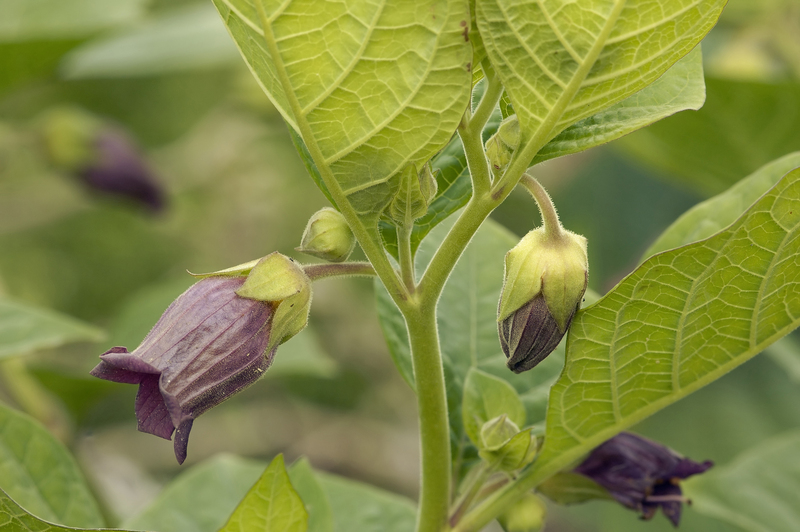The Ultimate Trio of Tips for Building a Garden That's Ready to Roam
Are you dreaming of cultivating a garden that's both versatile and ready to roam? Whether you're a seasoned horticulturist or a beginner with a green thumb, creating a portable and adaptable oasis transforms ordinary spaces into thriving sanctuaries. To help you embark on this fascinating journey, we present the ultimate trio of tips for building a garden that's ready to roam. Explore these expert insights to design mobile gardens that flourish anywhere!
Why Build a Roaming Garden?
Mobile gardens--sometimes called movable or portable gardens--are perfect for urban dwellers, renters, and anyone who loves to redesign their outdoor space. With changing seasons, shifting sunlight patterns, and evolving design ideas, a movable garden brings:
- Flexibility--Easily move plants to suit sunlight exposure or aesthetic preferences.
- Protection--Shield delicate species from extreme weather.
- Accessibility--Adapt your garden for patios, balconies, backyards, or even indoor spaces.
Below, let's explore the top three tips for creating a garden ready to roam and make your green space a living, moving masterpiece!

Tip 1: Choose the Right Containers for Mobility
1.1 Versatile Planters Are Key
When it comes to building a truly movable garden, the foundation lies in your choice of containers. Ditch the heavy, cumbersome planters and opt for lightweight materials. Consider these factors when selecting containers for a movable garden:
- Material: Use lightweight plastics, resin, and fabric grow bags. These simplify relocation and minimize strain.
- Wheels and Handles: Some planters come with integrated wheels or sturdy handles, making transportation a breeze.
- Stackable Options: Try vertical garden towers or stackable planters for maximizing yield in small spaces.
- Drainage: Always ensure containers have proper drainage holes to prevent root rot and allow easy cleaning.
Pro Tip: For those seeking ultimate mobility, explore rolling raised beds or portable planter carts--especially effective for rooftop or balcony gardens!
1.2 Mix and Match for Adaptability
Combine a mixture of containers in varied shapes and sizes to accommodate your garden's changing needs. Small pots are easy to tuck into nooks, while larger, wheeled containers can house your statement plants.
- Herb pots can sit along windowsills or be moved indoors for aromatic cooking inspiration year-round.
- Vegetable and flower planters with wheels can track sunlight across the patio during different seasons.
Tip 2: Opt for Plants That Thrive on the Move
2.1 Select Resilient, Adaptable Species
Not all plants are suited for garden mobility. Select species that handle disruptions well and flourish even with frequent changes in their environment. The best portable garden plants include:
- Herbs--such as basil, mint, rosemary, and thyme, which are compact, hardy, and adaptive.
- Leafy greens: Lettuce, spinach, and arugula thrive in containers and withstand relocation.
- Ornamental grasses: Lightweight, drought-tolerant, and visually impactful.
- Succulents and cacti: Require minimal water and adjust readily to shifts in location and light.
- Compact fruiting plants: Dwarf tomatoes, strawberries, and bush beans can flourish in portable planters.
2.2 Group Plants by Light and Water Needs
To simplify care in your mobility-ready garden, group plants with similar requirements for sunlight and watering. This approach:
- Ensures efficient use of resources.
- Prevents over- or under-watering.
- Enables your garden to adapt rapidly to weather changes or indoor transfer.
Example: Place sun-loving herbs and flowers together in one section, while shade-tolerant species occupy another. This makes it simpler to move only what's needed as seasons and lighting shift.
2.3 Rotate for Healthier Plants
A garden that's ready to roam means you can rotate planters for even sunlight exposure, reducing the risk of pest infestations and encouraging uniform growth.
Tip 3: Craft a Garden Layout That Moves With You
3.1 Flexible Layouts for Seamless Transition
Unlike permanent in-ground beds, movable gardens let you experiment with different layouts. Consider the following flexible garden design strategies:
- Zone Arrangement: Organize containers into defined zones, such as edibles, ornamentals, or shade-lovers, for efficient mobility.
- Temporary Borders: Use trellises on wheels, stackable stones, or portable screens to establish boundaries that can be easily relocated.
- Multifunctional Furniture: Incorporate benches or tables that double as planter storage for a functional and stylish urban oasis.
- Layered Heights: Arrange containers at varying heights. This maximizes visual impact and ensures all plants access proper light, even if you need to shuffle them frequently.
Remember: Keep high-mobility plants on the periphery and heavier or less mobile ones closer to central spots to reduce labor when rearranging.
3.2 Easy Paths for Smooth Relocation
Make sure there are clear pathways in your garden design to roll or carry planters without obstruction. Non-slip mats or gravel paths lend extra security to foot traffic and simplify the movement of wheeled units.
Expert Strategies for a Mobile-Ready Garden
Protect From Pests and Weather
A roaming garden is more exposed to environmental changes, but it also benefits from mobility. You can move delicate pots indoors to shield them from frost or storms. Invest in:
- Lightweight frost covers or breathable row covers for extra protection.
- Portable greenhouses for year-round gardening and safeguarding sensitive species.
- Drip trays and saucers to capture excess water if relocating indoors during rain.
Regular Maintenance Tips
- Check soil moisture often, as portable containers dry out faster than garden beds.
- Feed with slow-release fertilizers to maintain consistent nutrition even after moving.
- Inspect containers for cracks or wear to prevent accidental loss during transport.
- Prune roots periodically to ensure plants remain manageable size and transport-ready.
Incorporate Technology for Smart Gardening
Modern portable gardens benefit from smart sensors, self-watering planters, and portable grow lamps. These gadgets can boost plant health regardless of relocation, ensuring even the busiest gardeners enjoy lush, thriving spaces.
Garden Mobility: Inspiration for Every Space
Urban Roaming Gardens
City living doesn't have to limit your gardening dreams. Use:
- Window boxes with brackets for a mobile splash of color.
- Rolling carts for vegetables or compact fruit trees on balconies.
- Hanging baskets that can be switched from sun to shade throughout the year.
Suburban and Rural Mobile Gardens
In more spacious settings, try:
- Portable raised beds or container clusters for crop rotation and pest prevention.
- Mobile greenhouse frames to chase the sun or protect seasonal wonders.
- Trailer gardens for true nomadic plant lovers--bring your blooms on the road for events or sharing produce.
Common Mistakes to Avoid in Movable Gardens
- Overcrowding--Avoid cramming too many plants in one pot, as this hampers growth and mobility.
- Choosing heavy containers--Stick to lightweight, durable materials for easy transport.
- Ignoring drainage--Ensure every container offers adequate water flow to prevent soggy roots after moves.
- Neglecting grouping by need--Always cluster plants by light and water requirements to simplify care.
Conclusion: Designing a Garden that Grows With You
A garden ready to roam is the epitome of flexibility, beauty, and innovation in gardening. Whether you're working with a windowsill or an expansive patio, these top three garden mobility tips will help you create a thriving, adaptable oasis. Remember to choose lightweight, robust containers; select resilient, flexible plants; and design a layout that moves with your lifestyle.
With strategic planning, continual maintenance, and a dash of creative spirit, you can craft a garden that's not just ready for change--but designed to embrace it.

Frequently Asked Questions
What are the best plants for a traveling garden?
Compact and resilient species like herbs (basil, mint), leafy greens, succulents, dwarf tomatoes, and ornamental grasses are ideal for mobile gardens.
How can I make my planters more mobile?
Opt for containers with built-in wheels or handles, or buy sturdy plant caddies separately. Select lightweight materials like plastic, resin, or felt grow bags for easier lifting and relocation.
Can I start a roaming garden indoors?
Absolutely! Many indoor gardeners use mobile shelves, rolling carts, and movable grow lights to provide optimal care for their plants year-round.
Start Building Your Garden That's Ready to Roam Today!
Embrace the freedom of a garden that's built to move. With these ultimate tips for mobile gardening, you'll foster a space as dynamic as your own lifestyle. Happy gardening!



